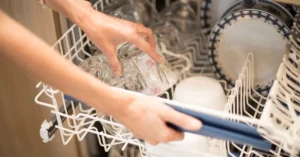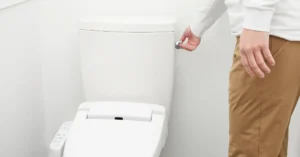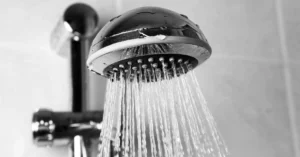When it comes to your home’s plumbing system, you essentially have two options: wait for something to break and fix it then, or invest in regular maintenance to prevent problems before they occur. For San Diego homeowners, this decision carries significant financial implications—often thousands of dollars more than you might expect.
At Solid Plumbing & Drain Inc., we’ve spent 20 years helping homeowners throughout San Diego County navigate plumbing decisions. We’ve seen firsthand how different maintenance approaches impact both immediate costs and long-term home values, particularly given Southern California’s unique plumbing challenges.
In this comprehensive guide, you’ll discover the true costs of both preventative maintenance and emergency repairs in the San Diego market, learn which approach ultimately saves more money, and understand how to implement the most cost-effective plumbing strategy for your specific home.
Understanding San Diego’s Unique Plumbing Challenges
Before comparing maintenance approaches, it’s essential to understand why San Diego homes face distinctive plumbing challenges that affect maintenance decisions.
Hard Water’s Financial Impact
San Diego County has some of the hardest water in the nation, with mineral content often exceeding 250 parts per million. These minerals, primarily calcium and magnesium create several costly issues:
– Scale buildup that gradually reduces pipe diameter, decreasing water pressure and efficiency
– Mineral deposits that shorten the lifespan of water heaters, dishwashers, and washing machines
– Accelerated deterioration of faucets, showerheads, and fixtures
– Increased soap and detergent usage due to reduced cleaning effectiveness
– Higher energy costs from appliances working harder to heat mineral-laden water
In communities with particularly hard water, such as Rancho Bernardo, Poway, and eastern San Diego County, these effects can add hundreds or even thousands of dollars to annual household expenses if not properly addressed.
Drought-Related Concentration Effects
Southern California’s recurring drought conditions create additional plumbing stresses:
– Lower water usage means higher mineral concentration in pipes
– Reduced flow provides less natural flushing of developing blockages
– Water-efficient fixtures may not provide sufficient volume to carry waste effectively
– Longer periods between substantial water usage allow sediment to settle and harden
– Conservation measures can inadvertently accelerate certain types of pipe deterioration
These factors are particularly relevant in water-conscious communities like Scripps Ranch and Rancho Bernardo, where conservation efforts can inadvertently increase maintenance needs.
Aging Infrastructure Throughout the County
San Diego’s diverse housing stock spans multiple eras of development, each with its own plumbing vulnerabilities:
– Pre-1950s homes often have cast iron or clay pipes approaching the end of their functional lifespan
– Homes built in the 1950s-1970s frequently have copper pipes that may be developing pinhole leaks
– 1970s-1990s homes may contain early plastic pipes that become brittle with age
– Even newer homes can have installation issues that emerge over time
In established neighborhoods like Clairemont, Allied Gardens, and La Mesa, where many homes retain at least portions of their original plumbing, these age-related factors significantly impact maintenance needs and emergency risk.
The True Cost of Emergency Plumbing Repairs
When plumbing emergencies strike, the financial impact extends far beyond the plumber’s bill.
Direct Repair Costs in San Diego’s Market
Emergency plumbing services in San Diego County come at a premium:
– After-hours service calls typically cost 1.5-2x standard rates
– Weekend and holiday rates can reach 2-3x normal pricing
– Emergency response times may require expedited parts delivery at additional cost
– Unplanned work often requires multiple visits as complications arise
– Rush permits and inspections add administrative costs
For common emergencies, these factors translate to significant price differences compared to planned work:
| Emergency Service | Average Emergency Cost | Planned Service Cost | Typical Premium |
|——————-|————————|———————-|—————-|
| Water Heater Replacement | $1,800-2,800 | $1,400-2,000 | 30-40% |
| Sewer Line Repair | $3,500-7,000+ | $2,500-5,000 | 40-50% |
| Burst Pipe Repair | $1,000-2,500 | $600-1,200 | 60-100% |
| Main Line Clog | $500-1,200 | $350-700 | 40-70% |
These premiums reflect not just higher labor rates but also the inefficiencies inherent in emergency work.
Collateral Damage Expenses
The most significant costs of plumbing emergencies often come from water damage to your home:
– Flooring replacement: $8-26 per square foot depending on material & labor involved
– Drywall repair and painting: $3-12 per square foot
– Mold remediation: Starts at $1,800 and comes with other health consequences.
– Cabinet replacement: $10,000 – $20,000 depending on the extent of damage
– Structural repairs: Potentially thousands depending on severity
In San Diego’s high-value real estate market, where home finishes tend to be premium quality, these restoration costs frequently exceed the actual plumbing repair expenses by 3-5 times.
Hidden Financial Impacts
Beyond repair and restoration costs, plumbing emergencies create several additional financial burdens:
– Temporary accommodation costs if your home becomes temporarily uninhabitable
– Lost income from missed work during emergency repairs
– Higher insurance premiums following significant claims
– Reduced property value if disclosure of water damage is required during sale
– Emotional stress and disruption that, while not directly financial, impact quality of life
These factors are rarely considered when homeowners evaluate the “cost” of emergency repairs but represent real financial impacts nonetheless.
The Investment in Preventative Maintenance
Preventative maintenance represents an investment approach to plumbing, with costs spread over time rather than concentrated in emergencies.
Typical Preventative Services and Costs
A comprehensive preventative maintenance program for San Diego homes typically includes:
– Annual whole-house plumbing inspection: $150-300
– Water heater maintenance (flushing, anode rod check): $100-250 annually
– Main sewer line camera inspection: $250-350 every 2-3 years
– Hydro-jetting of kitchen and main lines: $350-650 every 2 years
– Water pressure testing and regulation: $75-150 annually
– Fixture maintenance and cartridge replacement: $20-60 per fixture as needed
For a typical San Diego home, these services translate to approximately $500-1,000 in annual maintenance costs when averaged over multiple years.
Efficiency and Longevity Benefits
Beyond preventing emergencies, preventative maintenance delivers several efficiency benefits:
– Extended appliance lifespan (water heaters, dishwashers, washing machines)
– Reduced water bills from properly functioning fixtures and absence of leaks
– Lower energy costs from efficient water heaters and unobstructed pipes
– Consistent water pressure throughout the home
– Fewer disruptions from minor issues
These efficiency gains typically save San Diego homeowners $200-500 annually in utility costs alone, offsetting a significant portion of maintenance expenses.
Home Value Preservation
In San Diego’s competitive real estate market, plumbing condition significantly impacts property values:
– Well-maintained plumbing systems become selling points during home inspections
– Documentation of regular maintenance reassures potential buyers
– Absence of water damage history preserves maximum property value
– Updated fixtures and visible plumbing components enhance aesthetic appeal
– Proactive replacement of aging systems prevents sale delays or price negotiations
Real estate professionals estimate that homes with documented plumbing maintenance histories and updated systems can command 3-5% higher sale prices in San Diego’s market, a premium of $30,000-50,000 on a median-priced home.
Comparative Financial Analysis: The 5-Year Picture
To truly understand which approach saves more money, we need to examine typical scenarios over a meaningful timeframe.
Scenario 1: The Reactive Homeowner
Consider a typical 30-year-old, 2,000-square-foot San Diego home with original plumbing following a purely reactive approach over five years:
Year 1:
– Minor leak repair: $350
– No preventative maintenance: $0
– Annual total: $350
Year 2:
– Water heater failure (emergency replacement + minor water damage): $3,200
– Clogged kitchen drain: $225
– No preventative maintenance: $0
– Annual total: $3,425
Year 3:
– No significant issues: $0
– Annual total: $0
Year 4:
– Main sewer line backup with moderate damage: $5,800
– Leaking shower valve: $450
– No preventative maintenance: $0
– Annual total: $6,250
Year 5:
– Running toilet repairs: $275
– Leaking outdoor spigot: $185
– No preventative maintenance: $0
– Annual total: $460
Five-year total: $10,485
Average annual cost: $2,097
This scenario doesn’t account for potential catastrophic events like slab leaks or complete pipe failures, which could add $10,000+ to the total.
Scenario 2: The Preventative Homeowner
Now consider the same home with a comprehensive preventative maintenance program:
Year 1:
– Annual plumbing inspection: $250
– Water heater maintenance: $150
– Minor repairs identified during inspection: $275
– Annual total: $675
Year 2:
– Annual plumbing inspection: $250
– Sewer line camera inspection: $300
– Hydro-jetting of kitchen and main lines: $450
– Annual total: $1,000
Year 3:
– Annual plumbing inspection: $250
– Water heater maintenance: $150
– Replacement of aging shower valve (planned): $350
– Annual total: $750
Year 4:
– Annual plumbing inspection: $250
– Sewer line camera inspection: $300
– Planned partial replacement of aging drain line: $1,200
– Annual total: $1,750
Year 5:
– Annual plumbing inspection: $250
– Water heater maintenance: $150
– Fixture updates and minor repairs: $300
– Annual total: $700
Five-year total: $4,875
Average annual cost: $975
Additionally, this homeowner likely saved $200-500 annually in utility costs through efficient operation, further reducing the effective cost to $475-775 per year.
Long-term Financial Outcomes
The financial advantage of preventative maintenance becomes even more pronounced over longer timeframes:
– 10-year projections show reactive approaches costing 2.5-3x more than preventative programs
– Homes with preventative maintenance typically require less extensive repiping when eventually needed
– Catastrophic failure risk decreases dramatically with regular inspection and maintenance
– Property value preservation adds significant financial benefit at time of sale
– Insurance premiums often remain lower for homes without water damage claims
For most San Diego homeowners, the preventative approach represents not just savings but also significantly reduced financial risk.
Tailoring Your Approach to Your San Diego Home
Different homes throughout San Diego County benefit from customized maintenance strategies based on their specific characteristics.
Age-Based Maintenance Priorities
Your home’s age significantly influences which preventative measures deliver the best return on investment:
– Pre-1950s homes should prioritize sewer line inspections, pipe integrity assessment, and gradual system updates
– 1950s-1970s homes typically benefit most from water pressure regulation, copper pipe monitoring, and water heater maintenance
– 1980s-1990s homes often need focused attention on early plastic pipe systems and fixture updates
– Newer homes require less intensive maintenance but benefit from inspection to catch installation defects early
In historic neighborhoods like Mission Hills, North Park, and Kensington, where many homes retain original plumbing components, age-appropriate maintenance becomes particularly valuable in preventing costly emergencies.
Neighborhood-Specific Considerations
Different San Diego neighborhoods face unique plumbing challenges:
– Coastal communities (La Jolla to Imperial Beach): Focus on salt air corrosion effects and higher humidity impacts
– Canyon-adjacent neighborhoods (Mission Valley, Hillcrest): Emphasis on sewer line protection from root intrusion
– Older urban areas (North Park, South Park): Attention to aging infrastructure and connection points to municipal systems
– Newer master-planned communities (Otay Ranch, Del Sur): Monitoring for settling issues and construction defects
These localized factors should influence which preventative services you prioritize for maximum financial benefit.
Water Usage Patterns and Household Size
Your household’s specific water usage patterns affect maintenance needs:
– Large families with high water usage benefit most from frequent drain maintenance and water heater care
– Vacation homes or properties with periodic vacancy require special winterizing and system checks
– Homes with extensive landscaping irrigation need focused attention on outdoor plumbing components
– Properties with pools, spas, or water features require specialized preventative care for these systems
Customizing your maintenance program to your actual usage patterns maximizes the financial return on preventative investments.
Creating Your Cost-Effective Maintenance Plan
Developing a structured maintenance approach helps maximize financial benefits while minimizing unnecessary expenses.
Essential vs. Optional Maintenance Services
Not all preventative services deliver equal value. Focus first on these essential services:
– Annual whole-house plumbing inspection
– Water heater maintenance every 1-2 years
– Main sewer line inspection every 2-3 years
– Water pressure testing and regulation
These core services address the most common sources of expensive emergency repairs in San Diego homes.
Once these essentials are covered, consider these valuable but optional services based on your budget:
– Preventative hydro-jetting of kitchen and main lines
– Water softening or conditioning systems
– Fixture updates and modernization
– Smart leak detection systems
This tiered approach ensures your maintenance dollars target the highest-risk areas first.
DIY vs. Professional Maintenance
Some preventative measures can be performed by homeowners, while others require professional expertise:
Appropriate DIY maintenance:
– Regular fixture cleaning and aerator maintenance
– Checking for visible leaks and corrosion
– Testing water pressure with an inexpensive gauge
– Flushing water heaters (with proper instruction)
– Monitoring water bills for unexpected increases
Tasks requiring professional service:
– Camera inspections of sewer lines
– Comprehensive pressure testing of supply lines
– Water heater anode rod replacement
– Hydro-jetting of drain lines
– Whole-house plumbing assessments
This balanced approach controls costs while ensuring critical tasks are performed correctly.
Maintenance Timing and Scheduling
Strategic timing of maintenance services maximizes their value:
– Schedule sewer line inspections before San Diego’s rainy season
– Perform water heater maintenance in fall before winter demand increases
– Address outdoor plumbing before summer usage peaks
– Schedule whole-house inspections around key life events (home purchase, renovation, etc.)
– Group multiple services together to reduce service call charges
Many San Diego plumbing companies offer maintenance programs that optimize this timing automatically while providing priority scheduling and discounted rates.
Special Considerations for San Diego
While preventative maintenance is smart anywhere, it’s especially critical in San Diego due to our region’s combination of:
- Hard water that accelerates pipe corrosion and appliance failure
- Expensive property finishes that are costly to repair after water damage
- Diverse construction eras that require tailored strategies
- Water conservation pressures that can mask warning signs of failure
By proactively caring for your plumbing system, you don’t just avoid emergencies—you also improve efficiency, extend system life, and protect your home’s resale value.
Final Thoughts: A Little Maintenance Now Prevents Major Costs Later
Plumbing issues are inevitable—but major damage and high repair costs don’t have to be. As our five-year side-by-side analysis clearly shows, investing in preventative maintenance can save San Diego homeowners thousands of dollars in repairs, restoration, and even lost home value.
At Solid Plumbing & Drains Inc., we’ve seen every scenario—from the avoidable emergencies to the success stories of homeowners who invested in regular care. We’re here to help you stay ahead of costly surprises with honest guidance and professional support.
Schedule your annual plumbing inspection today and protect your home from preventable emergencies.




